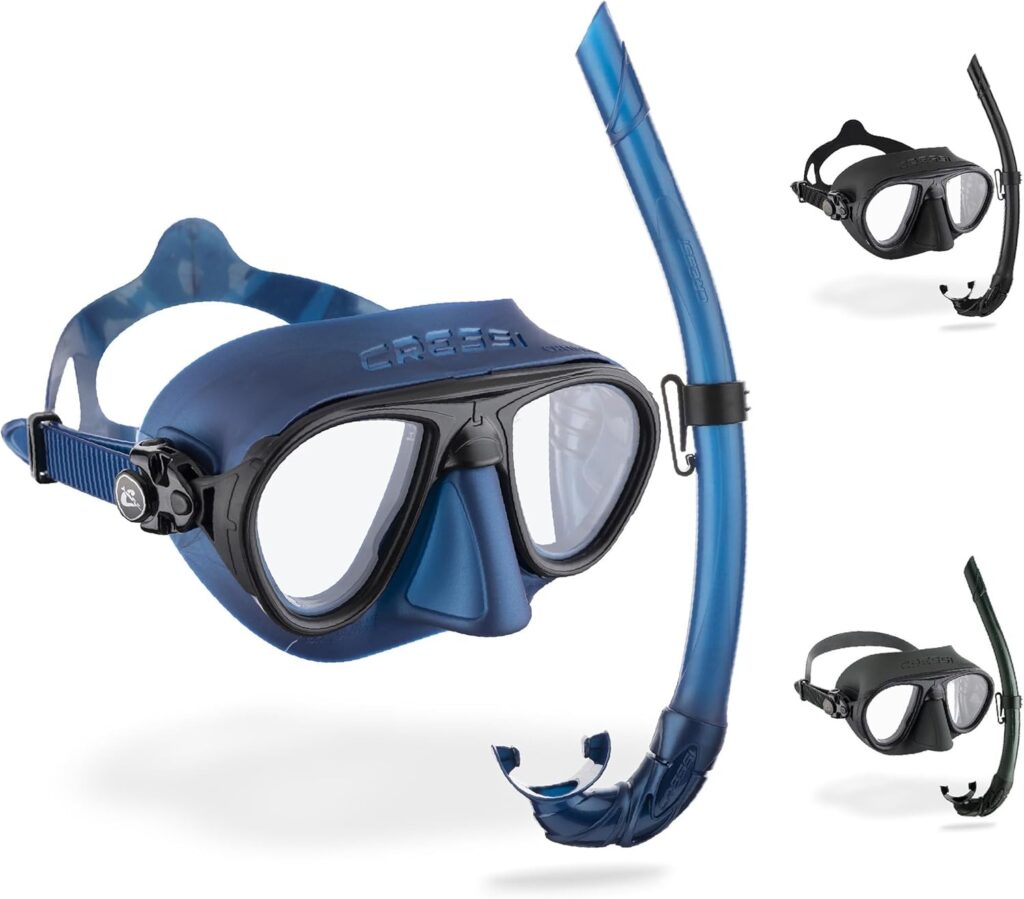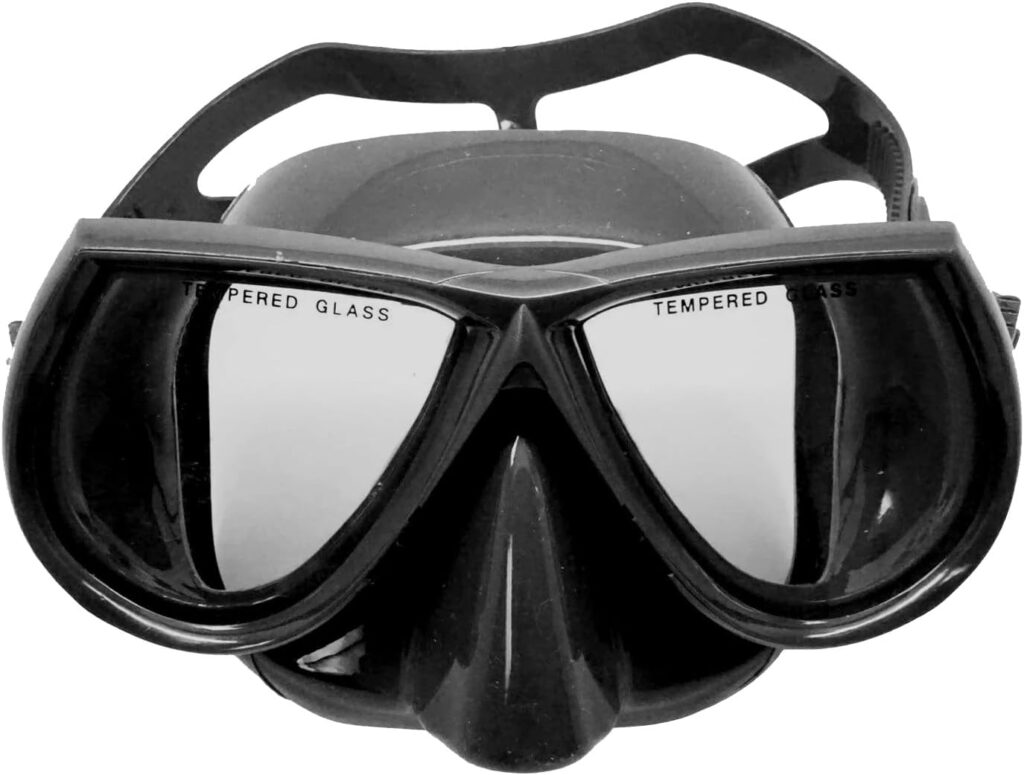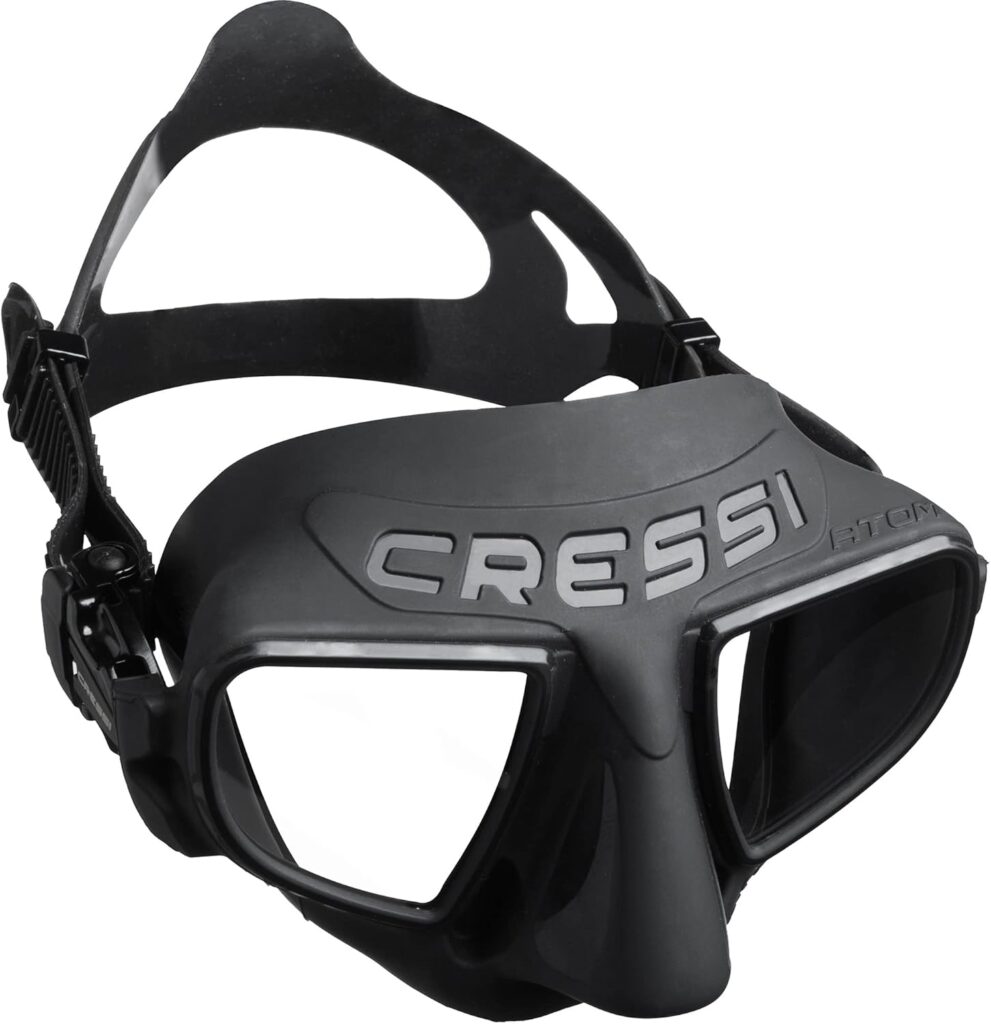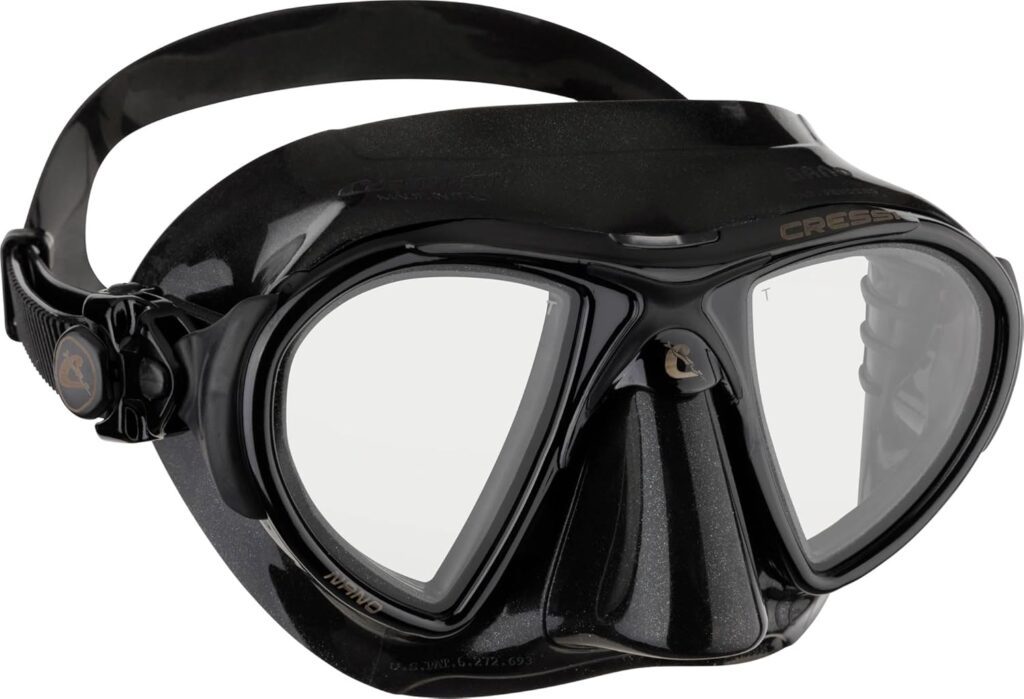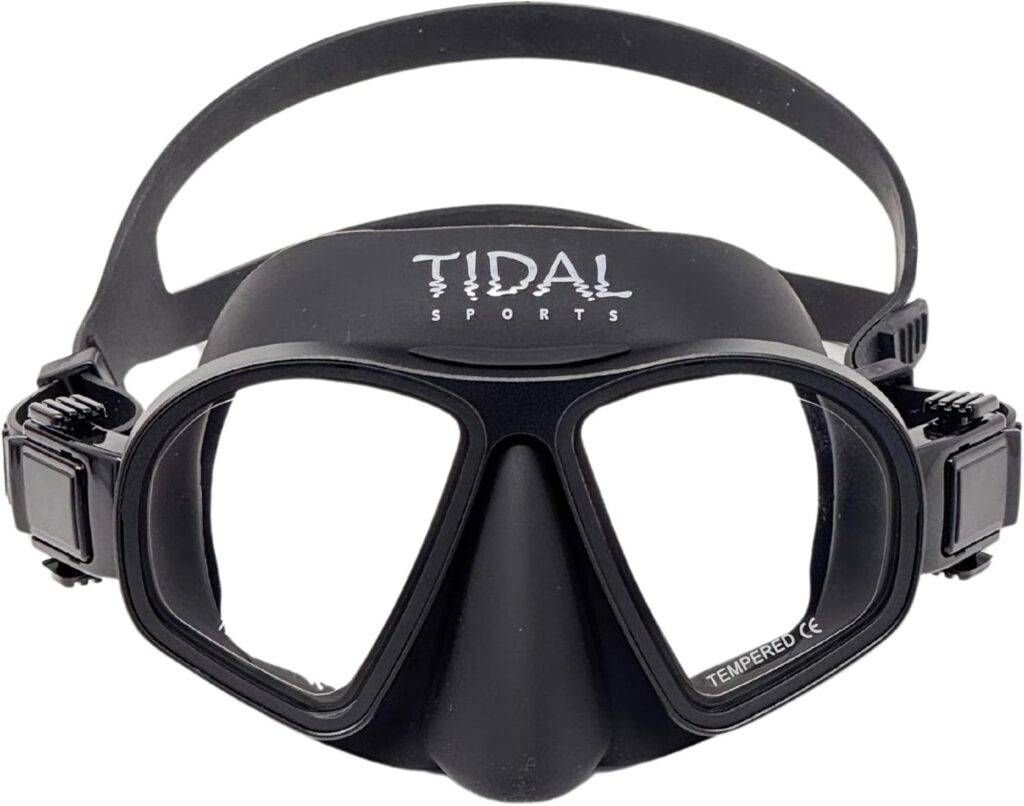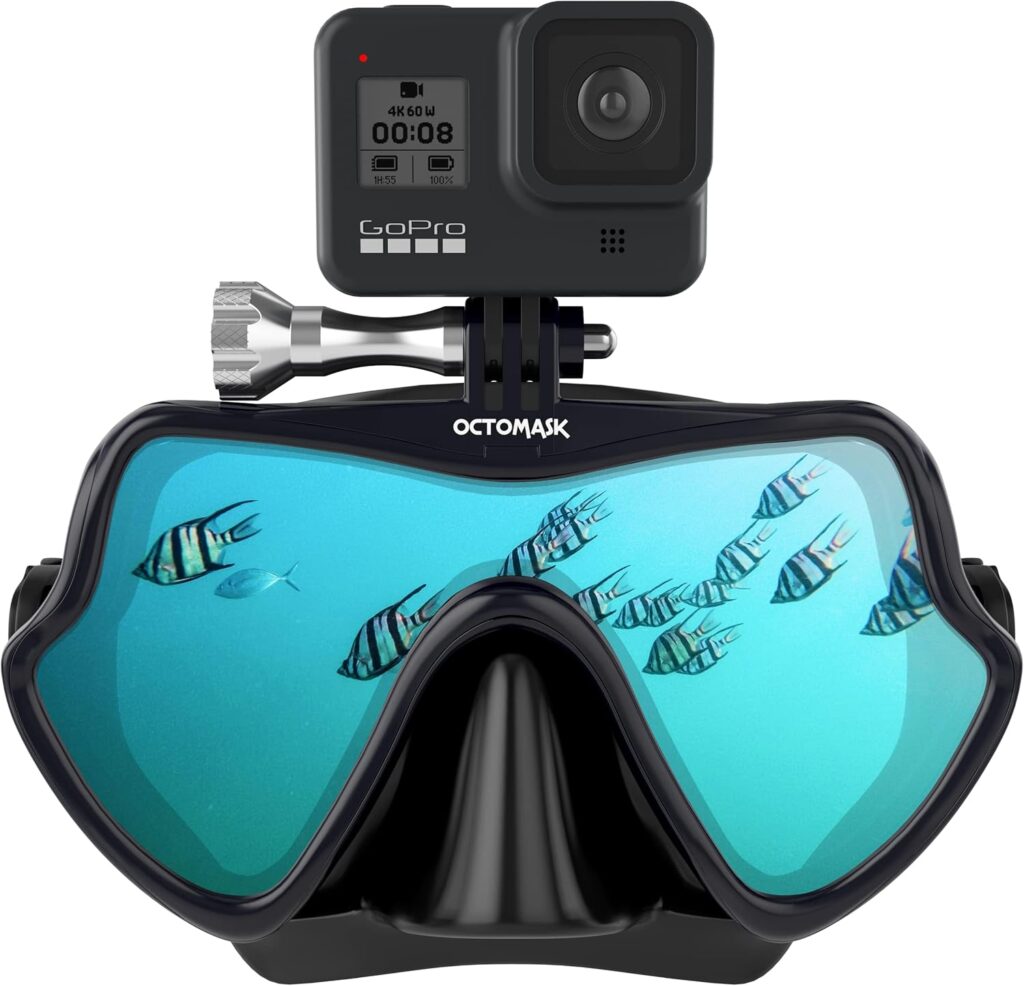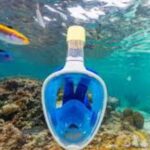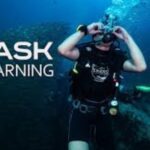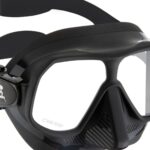10 Best Freediving Mask – Choosing Comfort, Clarity, and Depth
Best freediving masks? Imagine being underwater, staring at a reef so vivid it looks like nature’s version of high-definition TV… only to realize your mask is fogging so badly you can barely spot your own fins.
That’s when you start asking life’s important questions: why didn’t I look harder for the best freediving mask instead of grabbing the cheapest one off the shelf?
Let’s fix that problem right now.
What is the Best Freediving Mask?
The best freediving mask is one that combines a low internal volume for easy equalization, a comfortable silicone skirt that seals against your unique face shape, tempered glass lenses for safety, and a wide enough field of vision to enjoy the underwater world without distortion.
To put it simply:
- It must fit your face snugly without leaks.
- It should reduce the amount of air needed to equalize at depth.
- It needs lenses that resist shattering and fogging.
- And ideally, it feels so natural on your face you forget you’re wearing it.
This isn’t about flashy brand names or gimmicks. The right freediving mask is the one that works with your anatomy and your diving style, whether you’re chasing depth records, spearfishing for dinner, or drifting along a reef for fun.
The Best Freediving Masks
Finding the best freediving masks is about more than picking a stylish piece of gear. A good mask needs to feel natural on your face, reduce internal volume for easier equalization, and stay clear so you can enjoy every moment underwater.
The models below stand out for their comfort, durability, and performance, with subtle differences that suit various diving styles.
1. Cressi Calibro Mask & Corsica Snorkel Set
This combination offers a low-volume Calibro mask paired with the flexible Corsica snorkel, ideal for both freediving and scuba. The anti-fog system holds up well, even during longer dives, and the silicone skirt creates a reliable seal. Foldable snorkel design makes it travel-friendly and easy to store.
Pros
- Low internal volume for freediving efficiency
- Anti-fog system maintains clear vision
- Soft silicone skirt provides comfort and sealing
- Foldable snorkel is practical for travel
- Versatile for both scuba and freediving
Cons
- Snorkel may feel too basic for advanced divers
- Some users find the mask strap less durable over time
2. Scuba Choice Low Volume Silicone Spearfishing Mask
A straightforward, budget-friendly freediving mask that doesn’t compromise on comfort. Its low-volume build makes equalization simpler, while the silicone skirt ensures a snug fit for long dives. The clear lens provides a wide field of vision, helpful for spearfishing.
Pros
- Affordable option for beginners
- Comfortable silicone skirt
- Low volume aids equalization
- Clear vision under water
- Suitable for freediving and spearfishing
Cons
- Lacks advanced anti-fog features
- May not fit all face shapes securely
3. Cressi Atom Frameless Freediving Mask
Built with a frameless design, this mask feels lightweight and hydrodynamic in the water. The reduced internal volume helps conserve air and makes equalization smooth. Its ergonomic nose pocket allows easy pressure adjustment at depth.
Pros
- Frameless design improves comfort and fit
- Very low internal volume for deep freediving
- Ergonomic nose pocket for easy equalization
- Wide field of view despite compact design
- Durable Cressi build quality
Cons
- Frameless style may feel too minimalist for some
- Limited color options available
4. Jwintee Diving Mask
This oval-shaped mask offers a classic tempered glass lens with modern anti-fog treatment. The design provides high-definition clarity underwater, making it appealing for recreational freedivers. Silicone skirt adds comfort, though the fit can vary by face shape.
Pros
- Tempered glass lens for durability
- Anti-fog coating helps maintain clear vision
- Comfortable silicone skirt
- Suitable for multiple activities (scuba, snorkeling, freediving)
- Simple, functional design
Cons
- Oval shape may not fit narrow faces well
- Strap adjustments could feel stiff
5. Cressi Nano Freediving Mask
The Nano is one of the best freediving masks widely respected among freedivers for its ultra-low volume and excellent visibility. Designed in Italy, it blends sleek styling with practical hydrodynamic performance. This mask is especially popular with spearfishers who need reliable precision underwater.
Pros
- Ultra-low volume for efficient equalization
- Hydrodynamic profile reduces drag
- Made in Italy with quality construction
- Great for both freediving and spearfishing
- Wide field of vision relative to size
Cons
- Higher price point than entry-level masks
- Can feel small on wider faces
6. Tidal Freedive Mask
Tidal’s mask strikes a balance between affordability and performance, featuring a low-volume design that keeps dives comfortable. Its anti-fog treatment is dependable, reducing frustration in changing conditions. Comfortable straps and silicone skirt make it a solid everyday choice.
Pros
- Reliable anti-fog performance
- Low volume for freediving and snorkeling
- Comfortable fit for extended use
- Works well for spearfishing too
- Budget-friendly price point
Cons
- Build quality less premium than higher-end models
- Limited availability in stores
7. Mares Viper Freediving and Spearfishing Mask
Designed for serious freedivers, the Viper offers an exceptionally wide field of view without sacrificing low volume. The silicone skirt is treated to resist fogging, making it useful in colder waters. Its ergonomic strap system ensures a secure, customized fit.
Pros
- Low volume with wide viewing angles
- Silicone skirt resists fogging
- Ergonomic strap system for comfort
- Excellent for both freediving and spearfishing
- Durable Mares construction
Cons
- May feel tight for divers with larger faces
- Premium pricing compared to midrange masks
8. Tidal Mask Aluma Pro
This mask stands out for its advanced anti-fog technology, keeping the lenses clear even in challenging environments. The tempered glass lens is strong and distortion-free, while the low-volume design suits freediving. Its frameless style keeps it lightweight and streamlined.
Pros
- Advanced anti-fog treatment works consistently
- Low-volume, freediving-friendly design
- Tempered glass for durability
- Lightweight frameless construction
- Versatile for freediving, scuba, and snorkeling
Cons
- Not as widely tested as established brands
- May lack color/style variations
9. Hollis M1 Frameless Mask
The Hollis M1 is known for its crystal-clear lens that enhances visibility in low light, making it a favorite among technical divers. Its frameless design keeps the profile slim and hydrodynamic. The silicone skirt provides both comfort and a dependable seal.
Pros
- Exceptional clarity in dim conditions
- Frameless design for comfort
- Low profile for reduced drag
- Soft silicone skirt for a good seal
- Sturdy construction from a trusted brand
Con
- Price sits at the higher end
- Field of view narrower than some competitors
10. Frameless Scuba Mask with GoPro Mount
Perfect for divers who love capturing their underwater experiences, this frameless mask includes a GoPro mount. The low-volume build works well for freediving, and the tempered glass lenses add safety. Despite the added mount, the mask remains relatively lightweight.
Pros
- Integrated GoPro mount for easy filming
- Frameless design reduces bulk
- Low internal volume supports freediving
- Tempered glass lenses for safety
- Good balance between performance and fun features
Cons
- Camera mount may add slight drag
- Strap durability not as strong as premium masks
Why Fit Matters More Than Brand
Masks are like shoes. You can read rave reviews about a model, but if it doesn’t suit your foot or in this case, your face – it won’t matter. Many divers struggle with leaks or painful pressure points, not because the mask is poorly made, but because it doesn’t match their facial contours.
Here’s how to test for a good fit:
- Hold the mask against your face without using the strap.
- Inhale lightly through your nose.
- If the mask stays in place with gentle suction, it’s a good fit.
A properly sealed freediving mask should stay on your face without straps during this test. If it falls, air will leak underwater, and you’ll spend more time adjusting than diving.
Why Low Volume Mask for Freediving?
Equalization is one of the most important challenges in freediving. As you descend, the pressure outside the mask increases, creating a vacuum effect that can cause mask squeeze, painful bruising around the eyes.
A low-volume mask minimizes the air space inside, which means you use less of your precious lung air to equalize.
In practical terms, this allows you to dive deeper with less effort. A traditional snorkel mask might look comfortable at the surface, but at 15 meters, you’ll be struggling to keep up. Freediving masks like the Cressi Nano or similar models are specifically designed with low volume to make equalization easier and safer.
RELATED: Are freediving masks good for lap swimming?
The Field of View Dilemma
Some divers ask, “Why does the view feel smaller in a freediving mask compared to a regular scuba mask?” The reason is simple: low volume often means smaller lenses placed closer to your eyes. This enhances peripheral vision in many cases but reduces the panoramic “aquarium glass” look.
For freediving, this trade-off is worth it. A wider field of view might feel luxurious, but the extra air volume required makes equalization harder. When depth and efficiency matter, the balance leans toward compact designs.
RELATED: Can you use freedive mask for scuba?
Mask Squeeze: The Silent Menace
Mask squeeze is more than discomfort; it can rupture blood vessels around the eyes. The solution is not to buy a high-tech gadget but to equalize early and often by gently exhaling through your nose into the mask.
Think of it as watering a plant: small, consistent efforts prevent damage. Wait too long, and you’ll feel the squeeze before you realize what’s happening.
Anti-Fog Solutions That Actually Work
|
|
|
|
The ocean is beautiful, but not when viewed through a steamy haze. New masks often come with a thin layer of silicone residue that causes fogging. Burn it off with a lighter (carefully), scrub with non-abrasive toothpaste, or use anti-fog solutions before diving.
Old-school divers still swear by the spit-and-rub method. It may sound primitive, but enzymes in saliva do help reduce fogging. If you prefer something more sanitary, a few drops of baby shampoo diluted in water works wonders.
Spearfishing and Freediving Masks
When discussing the best spearfishing mask, priorities shift slightly. A spearfishing mask still requires low volume, but hunters also look for:
- Dark or camouflage skirts to reduce reflections.
- A design that hugs the face closely for a streamlined profile.
- Maximum visibility in the forward direction rather than wide peripheral angles.
This is why many spearos choose masks like the Cressi Nano or other low-profile models. They reduce drag and make it easier to track fast-moving fish.
Can You Freedive with Full Face Snorkel Mask?
This is a question that pops up often. The short answer: no, you shouldn’t. Full face snorkel masks are designed for surface snorkeling, not freediving. They trap too much air, making equalization nearly impossible. Worse, some models have been linked to safety issues because of improper CO₂ clearance.
If your goal is depth and comfort, stick to a purpose-built freediving mask.
Lens Choices and Safety
Not all lenses are equal. Tempered glass is a must because it’s stronger and shatters safely if broken. Plastic lenses may be lighter but scratch easily and distort vision. Mirrored or tinted lenses can be helpful in bright environments, especially for spearfishing, but they reduce visibility in low light.
Some masks allow corrective lenses, which is a game changer for divers with prescription needs. It’s safer than relying on contact lenses underwater, which can dry out or wash away.
Materials and Durability
The skirt, the part that seals against your face should be made of high-quality silicone. Cheaper rubber skirts degrade quickly and lose flexibility. Silicone stays soft, molds better to facial contours, and resists sun damage.
Strap systems also matter. Look for easily adjustable buckles that allow micro-adjustments without pulling your hair or slipping mid-dive.
|
|
|
|
Freediving Equipment Checklist
A mask is central, but it’s only one part of your freediving setup. Core freediving equipment includes:
- Mask and snorkel
- Long freediving fins
- Weight belt with quick release
- Wetsuit suited for water temperature
- Safety lanyard (for training at depth)
And while freediving differs from scuba diving, the principle is the same: use the right gear for the activity. Mixing equipment like trying to use a bulky scuba diving gear set for freediving will only make dives harder and riskier.
Care and Maintenance
A well-kept mask can last years. Rinse it with fresh water after every dive to remove salt and sand. Avoid leaving it in direct sunlight, as UV rays weaken silicone. Store it in a protective case to prevent scratches on the lenses.
If the strap wears out, replace it rather than discarding the whole mask. Many freediving masks use universal strap systems, making replacements simple.
FAQs 0n the Best Freediving Masks
What’s the difference between a freediving mask and a scuba mask?
Freediving masks have lower internal volume, making equalization easier. Scuba masks can afford larger lenses because scuba divers carry air tanks for equalizing at depth.
Do I need a purge valve?
Not necessarily. Some freedivers like purge valves because they make clearing water easier, but they add complexity and potential leak points.
How do I choose a mask for a narrow or wide face?
Brands often specify if a mask suits narrow, medium, or wide faces. Always do the suction test, and if possible, try different models in-store.
How deep can I dive with a freediving mask?
A good low-volume mask can comfortably go to recreational freediving depths (30–40 meters) as long as you equalize properly. Deeper dives depend on skill, safety training, and equalization technique.
How long should a freediving mask last?
With proper care, several years. Silicone masks hold up better than cheaper materials, and tempered lenses last unless physically damaged.
The Bottom Line on the Best Freediving Mask
Choosing the best freediving mask is less about shopping and more about solving problems before they arise: leaks, fogging, squeeze, poor vision, or mismatched fit. When those are addressed, the mask stops being a barrier and becomes an extension of you in the water.
